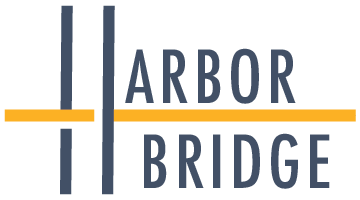Kindergarten Lessons in the Workplace: How Productive Struggle can drive innovation, resilience and growth
There’s a familiar saying: everything you need to know, you learn in Kindergarten. Now, knee-deep in the adventure of parenting a kindergartner myself, I’ve been reminded it's not just about what we learn, it’s how we learn it.
This week, a conversation with my son's learning specialist led to a significant revelation when she mentioned "Productive Struggle," a term that piqued my curiosity. It struck me as a reminder that the path doesn't have to be clear to be right, that the wrestling and fumbling through it all isn't just part of the process – it's the point.
When I got home, I looked up “Productive Struggle” and went down a rabbit hole of research and learned that it’s actually a teaching method. Productive Struggle within the classroom is when students are intentionally given challenges slightly beyond their current abilities. It is designed to encourage resilience, problem-solving and persistence.
As I explored this concept further, I recognized the parallels between educational strategies and leadership methods in the workplace.
By applying this concept in the workplace, leaders create an environment for employees to develop these essential skills, all while fostering a growth mindset. By embracing challenges just out of reach, employees learn to face obstacles with determination and recover from setbacks. As they wrestle with problems, they hone critical and creative thinking, leading to innovative solutions that drive the company forward. This practice also cultivates a mindset where persistence is valued as much as the outcome, preparing the team to handle the rapid pace of change in today's business landscape.
Productive Struggle isn't just about overcoming immediate challenges—it's about building a workforce that's robust, agile, and ready for whatever comes next.
Here are three key contexts in which Productive Struggle can be effectively applied:
Innovation and Creative Problem-Solving: When faced with complex problems without a straightforward answer and that require out-of-the-box thinking.
Personal and Professional Growth: When it's time for an employee to level up their skills, readying them for more senior roles or the latest tech advancements, pushing them outside their comfort zones.
Times of Organizational Change: When a team needs to navigate through change, such as company restructurings, technological upgrades or when taking a new strategic direction.
Understanding the concept of Productive Struggle is one thing; applying it effectively in the workplace is another. To put this into practice, here's a closer look at how leaders can transform these strategies from ideas into practice, enhancing their leadership and the capabilities of their teams.
Cultivate a Culture of Psychological Safety and Growth Mindset:
Safety to Fail: Leaders need to establish a culture where making mistakes is an accepted part of the learning process. This means removing the stigma from failure and instead, recognizing it as a stepping stone to innovation and mastery.
Valuing Effort and Learning: Shift the focus from punishing failure to celebrating the learning that comes from effort. Recognition should be given not only for achievements but also for the perseverance and problem-solving displayed along the way.
Promoting Teamwork: Foster a collaborative environment where knowledge sharing is the norm. Encouraging cross-functional teams to support each other ensures a diverse range of skills and perspectives to tackle complex problems.
Set Clear, Challenging yet Achievable Goals:
Stretch Goals: Implement goals that push employees just beyond their current limits, encouraging them to expand their comfort zones. These goals should be specific, measurable, attainable, relevant, and time-bound (SMART).
Clear Purpose: Clearly articulate how these goals align with wider business objectives. This helps employees to see the bigger picture and understand the impact of their work on the organization’s success.
Support Autonomy:
Delegating Meaningful Tasks: Assign new and challenging tasks that require employees to apply and extend their skills. This encourages learning by doing, which is a powerful way to access new knowledge.
Provide Resources: Ensure that employees have access to the necessary resources—be it time, budget or information—to tackle new challenges effectively.
Supportive Guidance: While offering support, leaders should resist solving problems for their team members. Instead, they should ask guiding questions that lead employees to their own solutions, facilitating skill development and confidence.
Adopt a Coaching Mindset:
You are not the Fixer: Adopt a coaching mindset where the leader’s role is to guide, challenge and support rather than to fix. This involves active listening, asking open-ended questions and offer constructive reflection.
Resisting Immediate Solutions: Encourage employees to engage deeply with challenges, and in doing so, employees develop their problem-solving skills, which leads to deeper learning and fosters long-term performance growth.
In the workplace, much like in a kindergarten classroom, it is the role of leadership to encourage their teams to lean into the struggle. While it can seem arduous and time-consuming, the end result is worth it as it yields more innovative solutions, increased ownership and pride in a job well-done and a workforce with significantly expanded skills that can be used for future challenges.
If you're looking to translate the concept of Productive Struggle into your leadership practice, Harborbridge's Learning and Development programs provide a space to develop these skills in a practical context. At Harborbridge, it's more than learning the theory of psychological safety, goal setting, autonomy, and coaching—it's learning hands-on strategies that bring out the best in you and your team. Reach out and let’s get to work!
